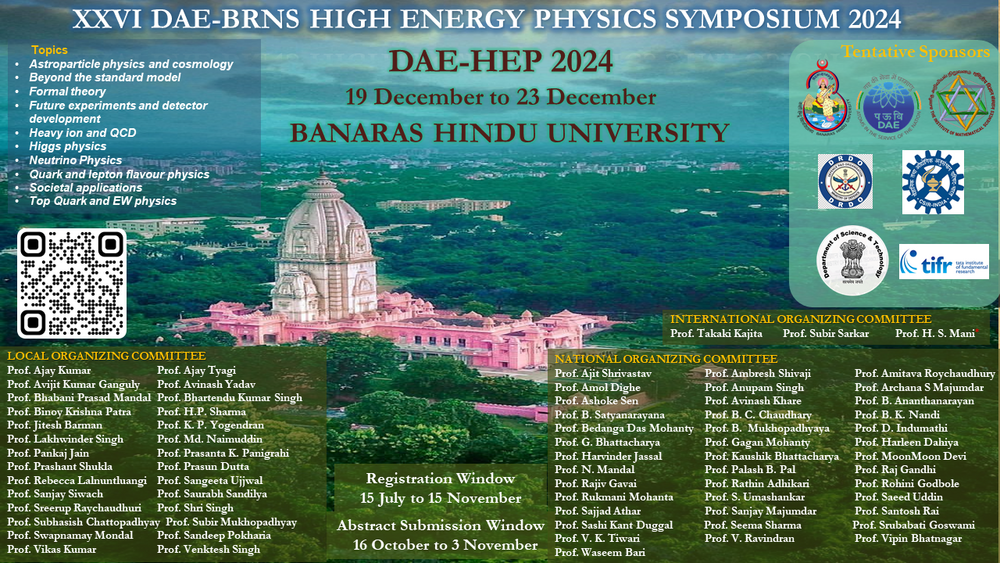Speaker
Description
The observation of collectivity and traces of deconfinement in high multiplicity pp events produced at LHC energies has drawn considerable attention towards the smaller collision systems, like pp and pPb. Studies involving statistical moments and scaling laws are expected to provide new insights into understanding the production dynamics. After the observation of KNO scaling violation at SPS energies, scaling of multiplicity distributions (MDs) was tried to revive in terms of a new quantity `entropy.' The entropy scaling was observed to hold good from $\sqrt{s} \sim$ 19 GeV to TeV range. The variable, entropy, it can also be used to study the multifractal characteristics of multiparticle production. The advantage of this method of studying the fractal features is that it is not related to the phase space bin width or the detection resolution.
Scaling of information entropy obtained from chaotically produced particles in pp collisions at SPS and LHC energies are examined in varying phase space bins and compared with the Monte Carlo model PYTHIA-8 (Monash). The findings reveal that experimental data show that the entropy scaling is valid from low energy, $\sqrt{s} = $ 19 GeV up to 13 TeV. The PYTHIA model predictions also support the experimental observations. Using Renyi's order q information entropy, the multifractal characteristics of particle production are studied by estimating the generalized dimensions, $D_{q}$, which, in turn, permits to look for the fluctuations in MDs by constructing the multifractal spectra. Nearly constant values of multifractal specific heat, c, obtained from 19 GeV to LHC energies suggest that the parameter $c$ may be regarded as a universal characteristic of particle production. The findings reveal, too, that Renyi's order q entropy could be another way to study the fluctuations in MDs in terms of spectral function, which has been argued to be a convenient function for comparing the results not only from different experiments but also between the data and MC models.
| Field of contribution | Phenomenology |
|---|

